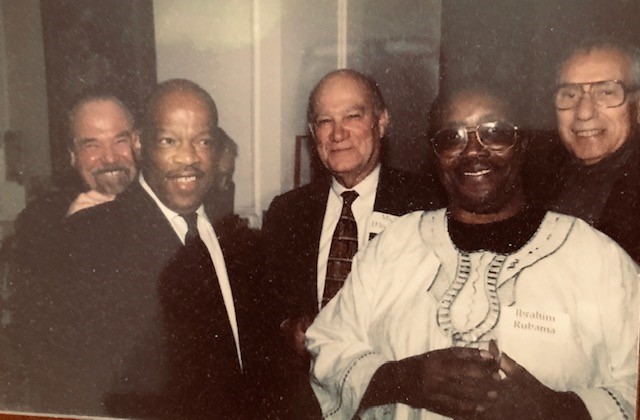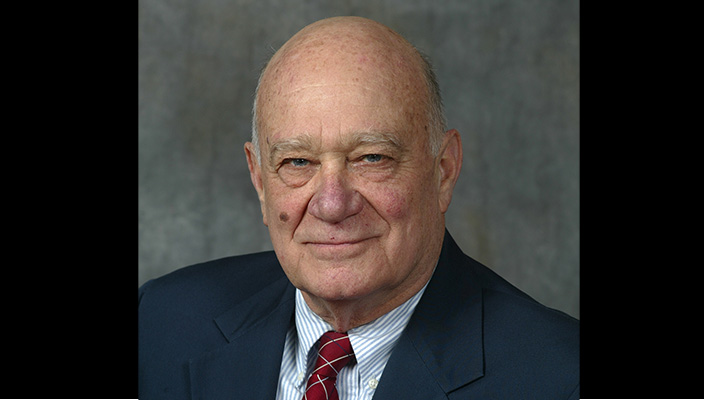Like many people, I had great admiration for John Lewis before I met and worked with him. During the 1990s, on behalf of the American Civil Liberties Union, we participated in meetings to discuss ways to expand the involvement of young people for using and protecting The First Amendment.
I was not surprised that the Long Islander whom John Lewis already knew was Harry Wachtel, who was living in Roslyn Heights at the time. John celebrated the work that Harry had done for civil rights from the time that Harry began as a key lawyer for Dr. King in 1962.
Harry (who died in 1997) worked closely with King, Lewis, and others in pushing for the Voting Rights Act of 1965.
Because of his friendship with Abe Fortas and many leaders close to President Johnson, John appreciated that Harry was able to arrange access to Vice-President Humphrey, other leaders, and with President Johnson.
Those key meetings paved the way for the quintessential test of any democracy: ensuring the right of every citizen to vote.
John was also aware of Harry’s project to get more Democrats elected to Congress when Harry established “The 23rd State,” a political action committee that supported liberal candidates on Long Island. The title for the PAC reflected the reality of the late 20th century that Nassau and Suffolk counties had a combined population that was larger than 22 states. If the five congressmen from those counties were Democrats, they could be a force in Washington.
I was one of the candidates backed by Harry’s group when I ran for Congress in 1984. Although I lost, the support by Harry’s group enabled me to run such a strong race that, in 1985, I was offered the Democratic nomination for County Executive. (I declined that race for reasons too extensive for this discussion).
Meeting with John Lewis nearly a quarter of a century ago quickly revealed that we had many shared interests and values. John was complimentary about my role as a history teacher and as a parent of activist children.
He told me about his only child, his son John Miles-Lewis, whose name was hyphenated to acknowledge his wife Lillian Miles.
In our extensive discussion of youth, I had already indicated that my spouse Andrea and I had given only her last name to our children: Leah Anthony Libresco and Zachary Jefferson Libresco. (We included activist middle names: suffragist Susan B. Anthony and civil libertarian Thomas Jefferson.)
I never met John’s son, who was about 20 when his dad and I collaborated; nor did I learn, until much later, that John Miles-Lewis was adopted when he was two months old.
John related my history profession to key aspects of rearing his son. He said that he emphasized to young John the deep importance of learning from the past; his son watched videos portraying his father and other leaders, and he read extensively about protest and reform.
As a teacher who had focused extensively on Thomas Jefferson, I spoke with John about some of Jefferson’s views concerning history and education that are too seldom emphasized.
Key values of history for Jefferson, which John Lewis appreciated, were the abilities for both negative and positive learning: to be aware of the errors and mistakes from the past so you “could shake off its dead hand,” and to find affirmative role models who, in their views and actions. epitomized worthy lives and the quests for liberty and justice.
More than anyone else, Jefferson was the visionary for the “Common School:” free, public education that would enable youngsters (white males, at that time) to become a “natural aristocracy” based on knowledge and talent, not wealth.
Of course, we recognized, even before the vital “Black Lives Matter Movement,” that Jefferson was a person of his generation, with limited focus on slavery and race, and on gender as well (whether he did more in his day than his peers in these regards is a topic for another discussion, but such an exploration does not dismiss the flawed values and conduct of Jefferson and many of our white founders).
In the 1990s, we spoke of Lincoln’s celebration of Jefferson and other Founders for providing “beacons” for a just, inclusive, democratic society. John Lewis was always characterized by generosity. He recognized that we could go forward by building better on the frameworks established by those with limited and flawed human values.
Throughout his life, John was known to forgive people who were racist, even those who had assaulted him when he was a nonviolent activist. In sustaining this spirit, John Lewis understandably looked to wrongdoers to acknowledge their bad conduct and exhibit a better direction.
His spirit of forgiveness and commitment to building humanizing connections were well known before I met him; those qualities informed his dedication to work with rising generations to keep our nation moving toward Lincoln’s idealized democratic beacons.
To that end, John was highly enthused by projects we worked on at Hofstra, in association with the Kettering Foundation, to provide intergenerational activities that could get beyond age divides and foster shared democratic activism.
Hofstra University’s Center for Civic Engagement and Institute for Peace Studies were inspired in no small part by John Lewis’ work with and commitment to nurturing young people to be alert, active citizens working toward the creation of a beloved community.




